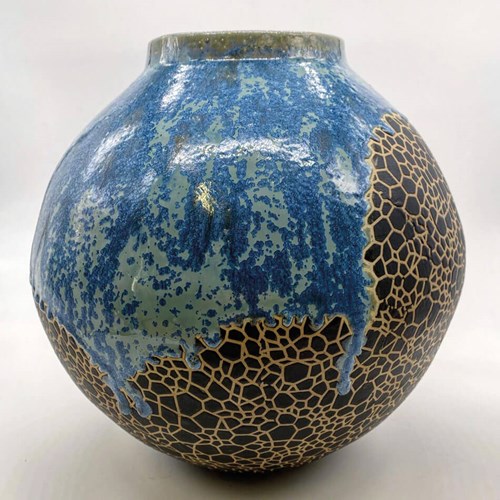Humans grow up with a vibrant sense of knowledge from the colours, shapes, and sizes we are in contact with from all around us. These come together to form some wonderful objects and designs. We are in awe of nature and recreate pieces which represent the beautiful world around us as we see it.
It was an honour and a privilege to speak with landscape artist Tracey Johnston, with a BA Hons 1st Class speciality in Ceramics. Tracy presently lives in County Down, Northern Ireland, and has a studio in a beautiful 1900s red brick house, but her home is Castlerock, County Londonderry. She is a ceramicist whose organic inspiration is attributed to the landscape she is influenced by, and that is the Ulster coastline, which tells a fascinating story of years of exposure to change both through nature and human interaction.
During my correspondence with Tracey, I learnt how she loved to wild swim, and her artistic aim was to represent what she sees in nature by creating pieces that can be touched, felt, and enjoyed. Some jars are harder and riskier to make, a challenge which creates thoughts for the next design. Tracey said she approaches her work anthropologically, having created a methodology of research which required walking, sketching, painting, reading and conversation. The canvas is clay, and she chose the moon jar shape because it is a remarkable representation of both the Earth, and the universe.



Sketrick, by Tracey Johnson (H30 x W29cm).
Whilst Tracey’s work is readily available online, it also features in a few galleries in Northern Ireland and Manchester. She recently completed an interview for Ulster Tatler Interior magazine, and we were amazed to see just some of the work showcased, which looks like an eye when you look inside and otherwise represents the landscape.
Part of her research investigates the liminal space we enter when walking upon our shores. These forms float on the water surface but can also connect us emotionally to the lands we live on. Tracey’s biggest challenge has been her ageing eyesight. Not being able to see the finer details in her work, she visited an optometrist to see if they could make her a special pair of glasses. The difference was phenomenal, enabling her to refine details. Working with two pair of glasses on her head, Tracey said: “No two jars can be the same. Time varies to plan and envisage each piece to its own merit.”
This beautiful piece is called Sketrick. Stoneware, multiple glazes. Sketrick Island has a great history, from castle-dwellers to smugglers. The crystal glaze resembles how the light catches the sparkling water as it rolls in over the black stones evoking that sense of peace you get from sitting on the shore with your coffee watching the sun set.
See more of Tracey Johnston's artwork here - https://www.traceyjohnstonceramics.com/
COMMENTS ARE WELCOME





